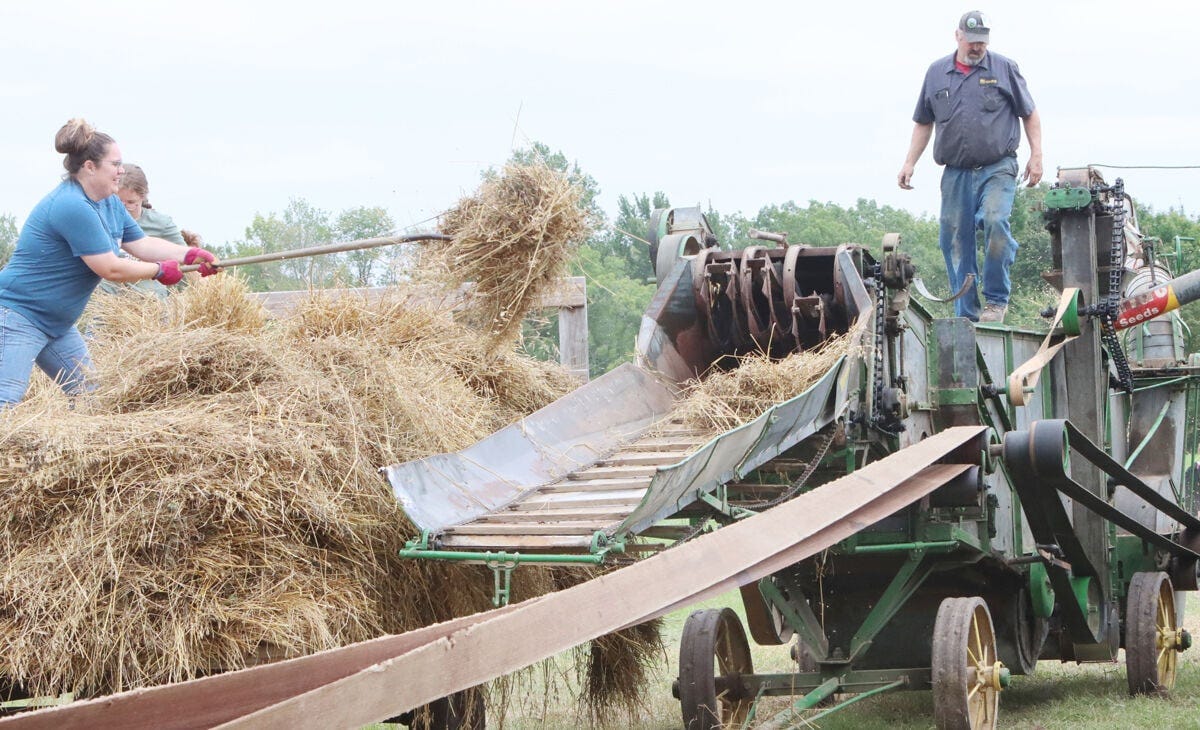The Broadsheet
Headlines from the Barron News-Shield August 20, 2025 edition, plus some extra, newsy recommendations from the editor.
Headlines
The Barron County Board of Supervisors put its stamp of approval on a large-scale solar energy project in the Town of Maple Grove on Monday, Aug. 17.
The Board approved resolutions for a Joint Development Agreement and an Emergency Response Plan with iBv Energy Partners. With the agreements now in place, a lawsuit by the County against iBv and the Wisconsin Public Service Commission will be dropped.
Two members of the Barron County Sheriff’s Department received a commendation at the Monday, Aug. 17, County Board meeting for their actions in responding to a chainsaw accident in rural Chetek. On Friday, July 25, Jeff Ladd sustained a severe injury to his neck while operating a chainsaw in a remote location in the Town of Prairie Lake. Ladd himself called 911 but “wasn’t able to give a location due the severity of his injuries and remote location of the area,” said Chief Deputy Jason Hagen. The call was taken by dispatcher Kari Dvorak. Among the first on the scene was deputy Ryan Hulback.
The Barron County Property Committee approved Friday, Aug. 15, the construction of a playground at the UW Eau Claire-Barron County campus to serve a forthcoming child care facility. The campus student center is being converted to what will be known as the Littlest Learners child care center, said Rice Lake Area School District Superintendent Randy Drost.
Ground was recently broken for an estimated $2 million facility at Cameron that will become the local headquarters of the Bobcat Plus implement business. Earlier this summer, Cameron Village Board approved construction of the dealership at a nine-acre site along the north side of 12 ½ Avenue, about a quarter mile west of Creamery Road (20th Street).
A farm accident that took place Saturday evening, Aug. 16, 2025, resulted in severe burns to a rural Almena resident, according to Barron County dispatch and other county records. Online sources identify the victim as David Balko, whom records indicate lives on a farm in the 1700 block of Sixth Street, about half a mile west of County Hwy. P, about three miles north of Almena.

Editor’s Picks
IN THE NEWS: Barron County rarely gets mentioned by metropolitan media outlets. So I was surprised last week when I opened the daily email newsletter from the Milwaukee Journal Sentinel to see a photo of a Pipestone Quarry in the Blue Hills on the eastern edge of Barron County. I know that quarry the surrounding forest well from building and riding mountain bike trails there. I actually helped guide State Archeologist Anne Rosebrough to the site a couple years ago.
I have many thoughts on this article. The headline is “Stolen land, sacred site: How an Ivy League school block Ojibwe in northern Wisconsin.” The lede references “White mobs” driving Ojibwe away from the quarry in the 1970s.
I had never heard of these mobs before. While this fact sticks out as unconfirmed in my mind, I am inclined to take former tribal chairman Rick St. Germaine at his word. There certainly was a lot of animosity towards indigenous people during that time period, including the long-standing walleye spearfishing rights controversy. The reporter asked likely the best possible source about it—Jim Leary, who is a historian and has a local connection.
Today, Ojibwe are no longer “blocked” from extracting pipestone. Barron County officials have made it clear that they are welcome in the county forest. The demand at the center of the article feels mostly symbolic, but perhaps more important than that. That is that Cornell University give up its 50 percent share of mineral rights and transfer it to the Ojibwe people. It is astonishing how much Cornell benefitted from selling off northern Wisconsin’s timber in the late 1800s. To still hold mineral rights feels unnecessary—even greedy—especially since mining in the vicinity of the pipestone quarry—even if there were any metals of economic value—would go against the sits historic and sacred designation.
A great book was written about Cornell’s Land Grant holdings in 1943 by Paul Wallace Gates. I’m very interested to see what comes of Jon Parmenter’s research referenced in the article.
That’s all I’ve got for this week. Thanks for reading. If you need to catch up on local news or are looking for more Editor’s Picks, check out the archives at newsshield.substack.com.
—Ryan Urban



